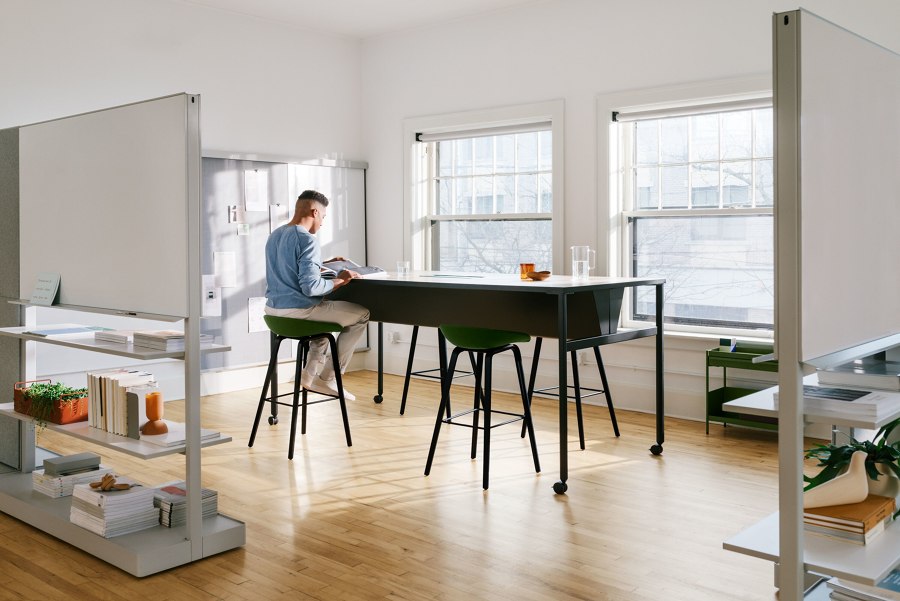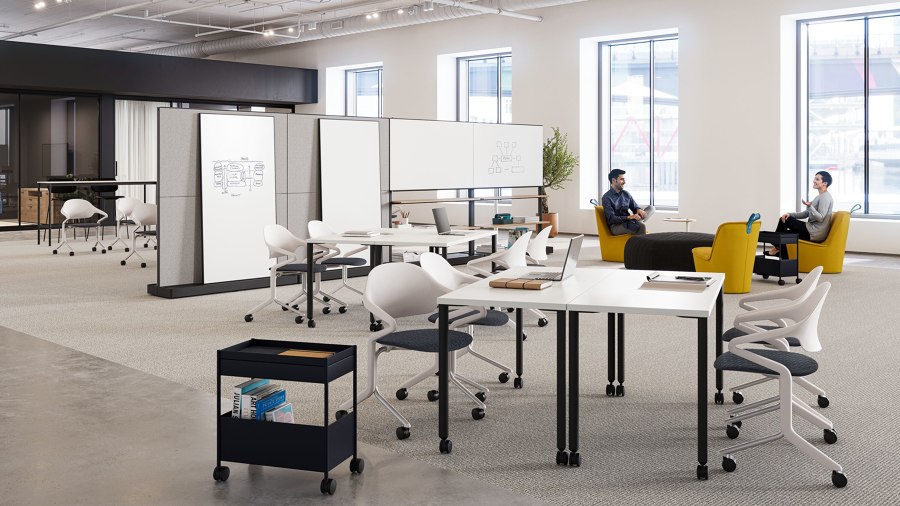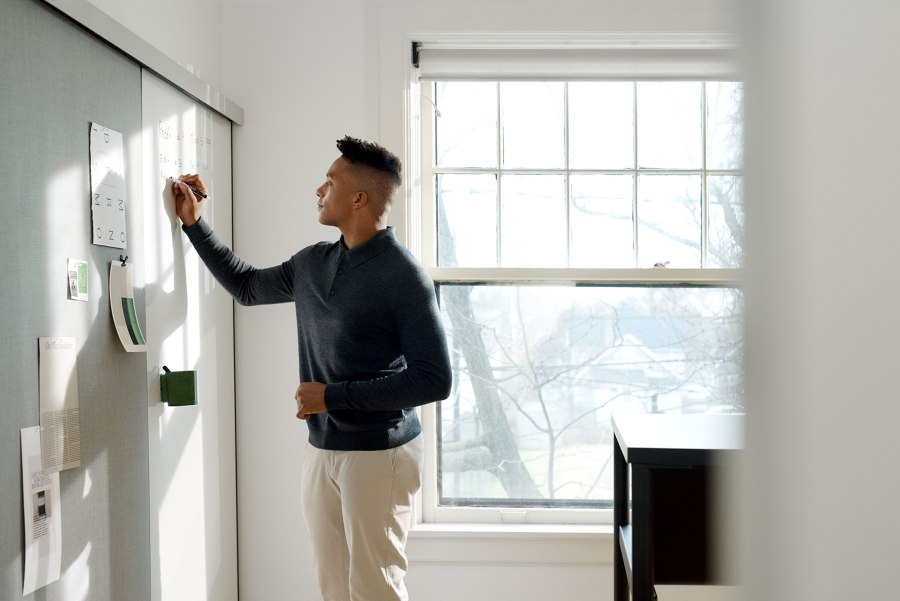‘Design with Impact’: MillerKnoll’s space planning for the hybrid workplace
Historia de la marca de Harriet Thorpe
Melksham, Reino Unido
09.09.24
Flexible work requires purposeful office design, and MillerKnoll’s ‘Design with Impact’ framework provides a roadmap for enhancing wellbeing, fostering community connection and adapting to change in modern workplaces.
‘Design with Impact’ provides a framework for flexible workspaces that create healthy and productive environments
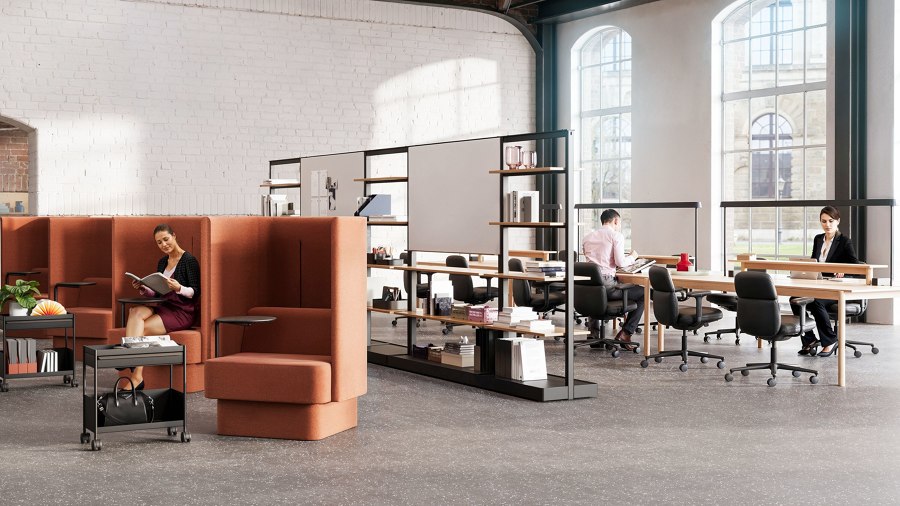
‘Design with Impact’ provides a framework for flexible workspaces that create healthy and productive environments
×Flexible working styles, from hours to attendance, have revolutionised and liberated the workforce, so much so that today, employees expect flexibility at work as standard. Yet, at the same time, according to a recent global survey, a vast majority still want the option to spend time in a physical workplace, because they recognise the positive benefits of being together. It’s true that flexibility has meant less in-person connections, reduced peer collaboration and mentorship, disrupted feedback flows and eroded community and culture. However, with the insights provided by the ‘Design with Impact’ framework – by the MillerKnoll collective, which includes Herman Miller and Knoll, amongst other brands – offices could be better designed to ensure that when colleagues do meet in the office, the time they spend there is even more productive, healthy, and invigorating for both people and business.
Creating adaptable and inspiring workspaces, MillerKnoll’s 'Design with Impact' fosters innovation and wellbeing in the workplace
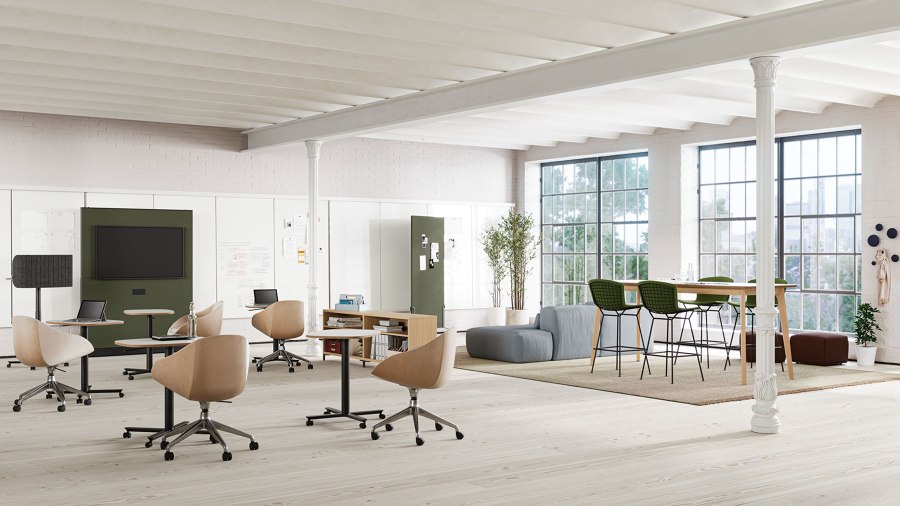
Creating adaptable and inspiring workspaces, MillerKnoll’s 'Design with Impact' fosters innovation and wellbeing in the workplace
×Design with impact
MillerKnoll’s framework provides a set of guidelines for employers to redesign and redefine the workplace to uncover its new purpose. Based on progressive research and in-depth discussions with clients, three key areas for improvements were identified: the human need of employees to improve their wellbeing, how to foster a sense of community and connection and how design can help organisations navigate and prepare for change. This can help organisations better understand the needs of their employees, therefore improving inclusivity, creativity and purpose.
MillerKnoll’s guidelines promote employee wellbeing, community connection and adaptability to change in the workplace
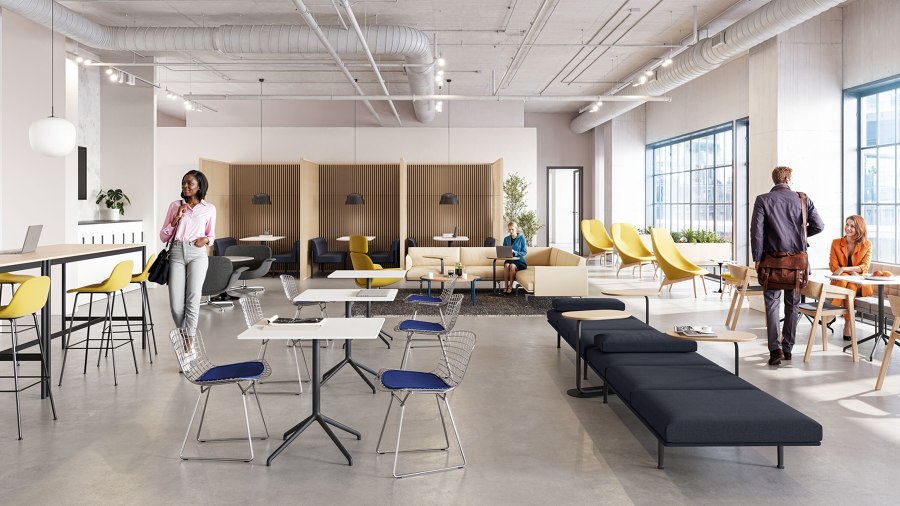
MillerKnoll’s guidelines promote employee wellbeing, community connection and adaptability to change in the workplace
×Empowering wellbeing
Wellbeing is a term that encompasses the bigger picture of health; it’s personal, subjective and relates to our holistic selves from physical to psychological and social. Prioritising the overall wellbeing of employees in workplace design can greatly enhance job satisfaction, productivity and retention rates, making it a valuable investment. This approach includes specifying ergonomic furniture and tools for individual comfort, creating diverse, inclusive and adaptable scenarios to encourage autonomy and support neurodiversity, as well as incorporating biophilic and sustainable design and socially vibrant collective spaces. Allowing employees to participate in the design process of their workspace fosters a sense of belonging and appreciation by creating diverse areas that offer flexibility in how and where they work, along with designated spaces for rejuvenation and respite.
Designing for wellbeing in the workplace strengthens employees by fostering inclusivity, supporting comfort, and encouraging participation
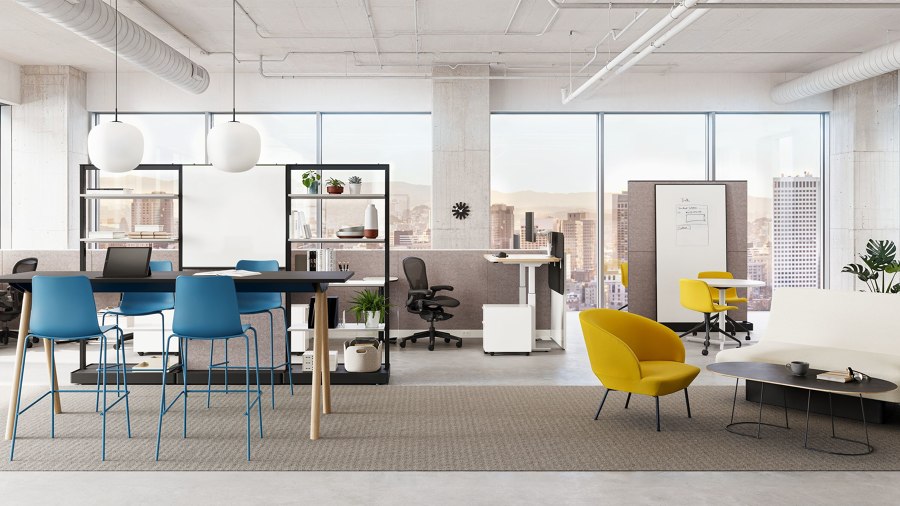
Designing for wellbeing in the workplace strengthens employees by fostering inclusivity, supporting comfort, and encouraging participation
×Nurturing connections
Maintaining a healthy, well-connected culture at work is important for building a sense of belonging and strong relationships – especially with today’s distributed, remote and virtual workforces. If research shows that both healthy in-person and virtual communications, as well as both strong and weak ties can catalyse knowledge and innovation, then office design needs to capitalise on forging rich connections. ‘Design with Impact’ offers a series of strategies for cultivating connection: designated spaces for immersion and spontaneity; technology and furnishings that equitably connect physical and digital workers; and welcoming environments that instil a shared sense of purpose and participation.
Fostering connection in the workplace is essential for a sense of belonging and innovation
Thriving amid change
Embracing change is a characteristic of all successful organisations. Yet, as innovation cycles, unpredictable global shifts and relentless technology updates show no sign of slowing down, keeping up requires constant re-evaluation and reinvention.
Maintaining a healthy, well-connected culture at work is important for building a sense of belonging and strong relationships
So, how can office design help improve an employer’s ability to manage change smoothly and with minimal disruption? ‘Design with Impact’ recommends adaptable strategies and spatial solutions that can easily change across different time scales – by the minute, the hour, and the day – as processes evolve, building resiliency and psychological safety into the workplace and enabling employees to thrive amidst change.
Adaptable office design, from collaborative areas to private workstations, enables employees to embrace change and drive innovation

Adaptable office design, from collaborative areas to private workstations, enables employees to embrace change and drive innovation
×Flexibility is here to stay, yet its expectations certainly do not mean less collaboration, connection, growth and innovation. With its three areas of focus and improvement, MillerKnoll’s ‘Design with Impact’ framework – drawing on the expertise from Herman Miller, Knoll and other iconic brands – is an ideal structure for employers to address the most pressing needs of today’s organisations. Beyond the one-size-fits-all approach, offices of the future are purposeful places equipped with ergonomic, adaptable and sustainable tools and spaces that enhance and improve diversity, equity and creativity while involving users in the design process.
© Architonic
Head to the Architonic Magazine for more insights on the latest products, trends and practices in architecture and design.




